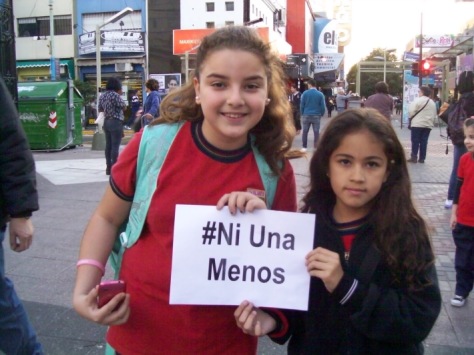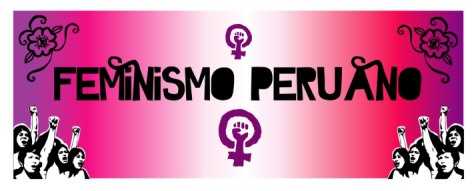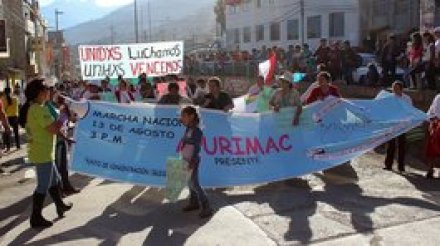Jun 27
20170
Breakthrough Capitalism Capitalism Carbon Tracker Ceres Coca-Cola David Blood Divestment Generation Investment Greenwashing New Economy Omidyar Network Skoll Foundation Solar Century SolarAid Tellus Mater Foundation The B Team UN Global Compact Volans WWF Zeronaut
Beautiful Delusions [McKibben’s Divestment Tour – Brought to You by Wall Street [Part XVI of an Investigative Report]
June 27, 2017
By Cory Morningstar
Part sixteen of an investigative series
Breakthrough Capitalism and Volans
Breakthrough Capitalism – where business is referred to as an ecosystem:
“The first thing to say is that this website is one of several that are part of our close business ecosystem. These include: Volans, Breakthrough Capitalism, The Zeronauts, SustainAbility” — John Elkington Website
“A revolution of capitalism”:
“We need a revolution of capitalism,” said Peter Bakker, former CFOI and CEO at TNT and now President Of the World Business Council for Sustainable Development.” – Volans Press Release, Breakthrough: How Business Leaders Can Create Market Revolutions, March 7, 2013
In the 2012 David Blood lecture (video),”Breakthrough Capitalism Forum – David Blood”, one notices the sponsorship in the background. At the top of the screen we can identify speakers/sponsors Jeremy Leggitt of Solar Century & Carbon Tracker, and Jennifer Morgan of WWF, to name two. [See full list of partners.]
Breakthrough Capitalism is a key project of Volans, a driver of market-based solutions. On the growing list of Volans partnerships, one finds Shell Foundation, Dow, Generation, GRI (Global Reporting Initiative) (Ceres, UN), Tellus Mater, The B Team (A Richard Branson NGO now being operated/managed by public relations firm Purpose, sister org. of Avaaz) and many others. On the Volans Board of advisors we find none other than Robert Massie, former President and CEO of New Economics Institute. [“Our early relationships with partners and clients have critically informed our evolution; the Skoll Foundation for Social Entrepreneurship, Allianz and HP, Atkins, Bayer, F&C, Nestlé, PPR and Recyclebank.”] [Source] [Note: Jeff Skoll co-founded EBay with Pierre Omidyar.]
“As public money gets pulled out of health care and education and all of this, NGOs funded by these major financial corporations and other kinds of financial instruments move in, doing the work that missionaries used to do during colonialism—giving the impression of being charitable organizations, but actually preparing the world for the free markets of corporate capital.” — Arundhati Roy, REVEALED: The head of Omidyar Network in India had a secret second job… Helping elect Narendra Modi, May 26, 2014
Showmanship over Science and Facts
Of interest regarding the influence these men have on the environmental movement is that both Skoll (Participant Media) and his EBay co-founder/partner, Omidyar financed the film, “Merchants of Doubt” (acquired by Sony Pictures) [2]
To illustrate how these institutional relationships develop and explain the mainstream media representations we need to look no further than Omidyar. Omidyar’s ties to the previous Obama administration run deep [Source] as does his vast network within the humanitarian industry complex. Humanity United is one such example. Consider that the Omidyar Network has made more investments in India than in any other country since 2009, according to its portfolio. [Source] More recently, Omidyar was a key player in the 2014 coup d’état carried out against Ukrainian President Viktor Yanukovych having co-funded Ukraine “revolution” groups with USAID and National Endowment for Democracy. [Source] [Source]
The Skoll-Omdiyar film, Merchants of Doubt, which is a condensed cinematic representation of the book it is based upon (published in 2010), focuses on the web of highly financed climate change deniers. The press release states: “Filmmaker Robert Kenner lifts the curtain on a secretive group of highly charismatic, silver-tongued pundits-for-hire who present themselves in the media as scientific authorities – yet have the contrary aim of spreading maximum confusion about well-studied public threats ranging from toxic chemicals to pharmaceuticals to climate change.” Note that this same description also aptly describes those at the helm of the non-profit industrial complex (NPIC). It is of interest that at this late juncture in anthropogenic climate disruption, billionaire “philanthropists” decided to highlight the players who reap the profits by burning carbon, rather than the players who stand to make trillions under the guise of an illusory “new economy.” The same new economy both Skoll and Omdiyar stand to reap further profits and market share from. A main prerequisite of the liberal left is that an “other” must always exist. For the divestment campaign the “other” is the fossil fuel industry – the said enemy. For Western imperial states, the “other” is the “terrorist”. For this particular film, the “others” (plural) are the deniers who can shoulder all the blame. For the NPIC as a whole, it matters little, who the “other” at this moment may be, just as long as it means not looking at our own reflections in the mirror.
“Omidyar Network is a philanthropic investment firm dedicated to harnessing the power of markets to create opportunity for people to improve their lives.”– Omidyar Network, “A World of Positive Returns”, website
In the Variety September 4, 2014 film review, the author observes that “Kenner is particularly fascinated by the phenomenon of self-described “grassroots” organizations that are actually shilling for specific corporate and political interests (the Koch Brothers-funded Americans for Prosperity, the Exxon Mobile-financed Heartland Institute, etc.).” This blatantly obvious (and accurate) observation, “the phenomenon of self-described ‘grassroots’ organizations that are actually shilling for specific corporate and political interests…” is one that could easily apply to the movements manufactured by and belonging to the NPIC. The shilling in this instance for The Rockefeller Foundation, The Clinton Global Initiative, etc. In the same review, the author writes that by “[P]roviding an accessible, somewhat facile framing device, professional magician Jamy Ian Swiss describes how all sleight-of-hand (including the card trick he performs and demystifies onscreen) is predicated on the audience’s willingness to be deceived.” This same predication fits America’s self-described environmental activists like a velvet glove.
The authors of Merchants of Doubt found that “one way to effectively remove public fear around a particular issue is to create fear elsewhere — something the tobacco industry managed by aligning itself with the flame-retardant industry, as if unprotected furniture, not cigarettes, were to blame for house fires.” This same tactic is utilized in the building of acquiescence for the “new economy”. It is not the industrialized capitalist economic system causing our environmental crisis, ecological collapse and the Sixth Great Extinction. Rather, it is the lack of technology via “clean energy” infrastructures global in scope (which in reality would/will only further industrialization, thus accelerating both greenhouse gas emissions and planetary environmental degradation).
In a final observation, the reviewer concludes that “There’s perhaps a necessary element of hypocrisy in this approach, given the film’s point that too many Americans, by and large, prefer showmanship over science.”
Above: “Showmanship over science.”
Today’s ever-devolving Western society continues to demonstrate its preference for showmanship over science, celebrity over substance, technology over nature, liberal ideology over radical ideology, human life over all other life, white skin over non-white.
Volans
“It’s all very well for me to say the future is environmental excellence, green consumerism, the triple bottom line or breakthrough capitalism, but the many movements and communities of which we are part deserve a deeper explanation of the thinking and experiences that brought us to these conclusions.” — John Elkington, Co-Founder of Environmental Data Services, SustainAbility and Volans
“We see signs of breakthrough in … Generation Investment Management CEO David Blood’s spotlighting a five key steps to sustainable capitalism, and in the alliance between Richard Branson of Virgin and former PUMA CEO Jochen Zeitz—who are building The BTeam.” — Volans Press Release, Breakthrough: How Business Leaders Can Create Market Revolutions, March 7, 2013
Partners publicly disclosed upon announcement of “The Breakthrough Capitalism” Program are listed as follows: Generation, Tellus Mater Foundation, Autodesk, HewlettPackard, The Value Web and Innovationarts.
The first “follows” chosen upon the set-up of twitter accounts are always revealing and Breakthrough’s twitter account is no exception. The first four follows are founders, co-founders, directors and the social media outreach of Volans. The fifth person chosen to follow is a partner at Generation Investment. Number six is John B Elkington? (founder and Executive Chairman of Volans and author/creator of zeronauts; a project of Volans). Seventh is Jeroen van Lawick, international consultancy for “transformative CSR” (“corporate social responsibility”) and organization development, as well as founder of Zijn Werkt!. Eighth is David Willans, marketing director at Futerra. Number nine is none other than 350.org’s Naomi Klein who was chosen ahead of number ten: Jeremy Leggett (Solarcentury, SolarAid, and Carbon tracker).
“Breakthrough Capitalism” asks the question as to how to engage the “1,100 or so companies that now control half of the world’s market capitalization.”
Whereas Volans and Generation would have us believe we should give these corporations even more power, the truth is that these very 1,100 corporations more than likely represent the first ones that should be targeted for dismantlement.
“Volans is part think-tank, part consultancy, part broker and part incubator. Based in London and Singapore, Volans works globally with entrepreneurs, businesses, investors and governments to develop and scale innovative solutions to financial, social and environmental challenges. Our Pathways to Scale program aims to identify, map and remove barriers that slow the scaling of innovative solutions to governance, economic, social and environmental challenges.” [Source]
John Elkington is the founding partner and Executive Chairman of Volans, as well as the co-founder of SustainAbility (1987) and Environmental Data Services (ENDS, 1978). He is recognized as a world authority on “corporate responsibility” and “sustainable development.” In 2004, Businessweek described him as “a dean of the corporate responsibility movement for three decades.” In 2008, The Evening Standard named Elkington “a true green business guru,” and “an evangelist for corporate social and environmental responsibility long before it was fashionable.” Of course, only those who serve to benefit from such false narratives bestow these titles and accreditations. For example, “corporate responsibility” is the strategic means to increase corporate domination via marketing.
In addition to the aforementioned credentials, Elkington is identified as a B Team “expert” on The B Team website. [Full bio.]
Elkington’s latest book utilizes/promotes Branson’s The B Team organization. The book titled Tomorrow’s Bottom Line: The B Team Playbook for Market Gamechangers, co-authored with B Team co-founder and former PUMA CEO Jochen Zeitz, was released in 2014.
Elkington has served as a juror for the first Gigaton Awards, developed by Richard Branson’s non-profit Carbon War Room – dubbed the ‘Oscars of sustainability.’ As well, he has completed a Fellowship at the Bellagio Centre awarded to him by The Rockefeller Foundation.
Elkington serves/has served on 70 boards and advisory boards. He co-chairs the United Nations Global Compact (UNGC) Breakthrough Innovation Advisory Council, chairs the Global Reporting Initiative (GRI) Technology Consortium, and is a member of the Advisory Board of the Global Commission on Business & Sustainable Development (GCBSD). He is a member of the Board of the Social Stock Exchange (SSX), and chairs its Admissions Panel. He is also a member of the Boards of organizations such as the Biomimicry Institute and The Ecological Sequestration Trust (TEST), and a member of Advisory Boards for organizations such as 2degrees Network, Aviva, The B Team, Nestlé, Tesco, Guardian Sustainable Business, and Zouk Capital (cleantech fund). [Source] Elkington has also served as strategic advisor to Bayer Material Science, Gaia Energy, Instituto Ethos, One Earth Innovation, Polecat UK; senior Advisor to the Business & Human Rights Resource Centre; board member of EcoVadis, Recyclebank Sustainability Advisory Council; the Evian Group Brain Trust and the Newsweek Green Rankings Advisory Board.
Elkington’s first involvement in the corporate environmental sector was raising funds at the age of 11 for the newly formed World Wildlife Fund (WWF), where he has for many years served on the Council of Ambassadors. He has written or co-authored 17 books, including The Gene Factory: Inside the Genetic and Biotechnology Business Revolution (1985), Double Dividends? US Biotechnology and Third World Development (1986), The Green Capitalists: Industry’s Search for Environmental Excellence (with Tom Burke , 1987), and The Power of Unreasonable People: How Social Entrepreneurs Create Markets That Change the World, co-authored with Volans co-founder Pamela Hartigan (2008).
In 2005 Elkington received the “Social Capitalist of the Year” award from Fast Company, later to be awarded a 3-year, $1 million field-building grant from the Skoll Foundation for Social Entrepreneurship, at SustainAbility and Volans.
In September of 2016 Elkington launched “The Breakthrough Innovation Platform” to advance the United Nations Sustainable Development Goals (SDGs) in partnership with UN Global Compact. “The ultimate target of the SDGs is the privatization of Indigenous and public resources worldwide.” [Source]
“Aligned with the UN Global Compact’s priority of translating the new SDGs into business action, the aim of the Breakthrough Innovation Platform is to challenge and stretch prevailing business mindsets into the opportunity spaces offered by the SDGs.” — UN Global Compact and Volans Announce Strategic Partnership on Breakthrough Innovation for the Sustainable Development Goals, May 31, 2016
Beautiful Delusions | Zeronaut
Illustration by Stephanie McMillan for Wrong Kind of Green
“Zero offers a powerful key to unlocking tomorrow’s growth markets.” – Zeronaut
Zeronaut was launched in April, 2008. It was founded by John Elkington.
Sophisticated and seductive marketing which appeals to an audience comprised of privilege is of critical importance. The marketing strategist executive, set with the task of selling an illusory “new economy”, employs both market-centric and human-centric terminology, which is alluring when paired with an underlying white saviour pretext – a prerequisite to successfully gloss over and elude the true extent of capitalism’s inherent violence and destructiveness. Market-centric language is strategically enticing as it invokes a “new’ economy” avec with new profit centres, inclusive of carbon emissions credits, carbon capture storage, and most critically, today, the financialization of nature.
It is important to note that the Zeronaut mission/philosophy/marketing scheme is beguiling: “a new breed of innovator, determined to drive problems such as carbon, waste, toxics, and poverty to zero.” Yet, such beautiful delusions can only be afforded by the privileged. Not those who are oppressed under the capitalist economic system. Not the earth herself whose natural resources are destroyed in the creation of commodities for capital. Not for those now referred to as “human capital”. Not for those murdered by empire in the race for what’s left of our planet’s rapidly declining rare Earth minerals and resources.
Those praising the Zeronaut book include (in the order that they appear) Paul Hawken, David Blood (Goldman Sachs, Generation Investment), Jochen Zeit ( The B Team co-founder/Chairman of PUMA), David Grayson, Chair and Director of the Doughty Centre for Corporate Responsibility and Peter Bakker, the President of the World Business Council for Sustainable Development.
The Zeronaut 2012 Roll of Honor list includes Bill and Melinda Gates (GMO seeds), Al Gore and David Blood (Generation Investment, environmental markets), Ban-Ki Moon (environmental markets, carbon markets, methane extraction, REDD+), James Hansen (nuclear), Paul Hawken (“natural” capitalism), Pavan Sukhdev of TEEB (The Economics of Ecosystems and Biodiversity – commodification of the commons) and many more of those in elite positions of power and influence. [Full list.]
An example of the ideology espoused by Zeronaut, is highlighted in the sample chapter formerly found on its website. The author tells the reader that the Kraft Corporation has achieved “zero waste” at 36 food plants, thus “it’s happening.”
In the Kraft Beaver Dam plant in Wisconsin (that manufactures Philadelphia Cream Cheese) Kraft built an anaerobic digester – the digester processed waste into energy that was fed into the local grid. Yet, this is hardly a solution for Kraft’s toxic waste. Rather, it is a mechanism that serves to perpetuate the production of excess waste, because the excess waste has become profitable.
Kraft plants in Cikarang and Karawang, Indonesia, where plastic packaging film creates most of the waste, found a recycler that turns the material into bags and buckets. Yet another market was found. Yet, what about the oil required to produce the film in the first place? The planet continues to be drilled and decimated. The bags and buckets which need infinite growth, to consume the infinite waste, also require infinite consumptive patterns.
Kraft plants in Fresno and San Leandro, California that make a variety of Kraft products including Cornnuts, Capri Sun and Kool-Aid (toxins in, toxins out), have collected more than 100 tons of food waste like corn skins to be used as animal feed since 2009. Yet this food, not fit for human consumption, is therefore certainly not fit for animal consumption either. Further, one can be almost certain that these corn skins are derived from genetically engineered corn, as will be the soy, sugar beet and canola. In addition, we must take into account other hazardous, chemical intensive, biodiversity destroying industrialized crops.
The deluge of half truths and misinformation propagated by the NPIC is the reason why it is necessary to analyse and define what the term “zero waste” truly means. In that regard, what is not mentioned is the mandatory mass-consumption of the product leaving the manufacturing plants and warehouses. Of no mention or consideration is the waste of energy to produce this “food” and transport this “food” that very likely has little to no true nutritional value. In fact, one could quite easily make the argument such processed foods and “edible” oils, key products/ingredients of Kraft, actually poison whole societies, inducing cancers, sickness/disease, and obesity. (In essence, products under the guise of “food” that amount to no more than toxic sludge.)
Of course reducing waste may add to Kraft’s bottom line, but even more so if they can achieve this by finding markets for their waste – which they have. In 2012, at a Kraft coffee plant in Vienna, Austria, the facility sent 250 tons of used coffee bean husks to a local biomass plant that generates heat and electricity. Yet biomass is a false solution with the waste externalized onto our health. “Biomass incineration is one of the most expensive, inefficient and polluting ways to make energy — even dirtier than coal in some ways. Forests are destroyed, the climate is cooked, crop lands are wasted, resources are destroyed and low-income communities and communities of color suffer increased health problems from this unnecessary dirty energy source that poses as renewable energy.” [Source]
Kraft’s direct and/or indirect support of the corporations that push monoculture and/or genetically engineered crops, is complicity to the immense social and environmental impacts destroying both communities and life of every form.
In 2012 a Kraft coffee plant in St. Petersburg cut waste sent to landfills by 90 percent by reusing coffee bean shipping bags and pallets and by sending off 15,000 tons of coffee grounds to be turned into fertilizer for farms in the area. The reusing of the bags and pellets is common sense and good practise. Yet, one must also remember this same 15,000 tons of coffee contained pesticides and chemicals which would have leached into the earth’s soil, underground aquifers, water systems, our air and inevitably, our bodies and the bodies on non-human life. This is not to mention Kraft, like all multinational food corporations, make billions on the backs of farmers. Starbucks five dollar lattes are full to the brim with the blood and sweat of the farmers that barely survive under the industrialized capitalist system. Support of corporate power dominating agriculture ensures the continuance of exploitation while furthering negative social and community impacts.
Therefore, beneath the layers of Kraft’s zero waste “feat” is little more than green washing with highly evolved and a most sophisticated marketing.
According to the excerpt, Coca-Cola has also achieved “zero waste”. Yet corporate media fails to report Coca-Cola distributing free “fertilizer” in India, later analyzed to be nothing more than toxic waste. Does the BPA (a known carcinogen) that lines the Coca-Cola cans not qualify as waste? How much one-time use, disposable (including recycled) packaging by Kraft and Coca-Cola alone, ends up in landfills and oceans once it leaves the processing plants? Recycling, a billion dollar energy intensive industry which also creates massive volumes of waste, is not a true solution to the real problem: that of producing items that are simply not necessities in any way shape or form. As a further concern to the environmental issue which is the human rights violations committed by this corporation, do the union leaders assassinated under Coca-Cola’s reign of terror in Columbia constitute waste – or is “human capital” nothing more than a tax write-off under the “third industrial revolution”, that being the “new economy”?
The idea that the same corporations that have brought the apocalypse to or doorstep are the same corporations who will now usher in a new green utopia is just that – a utopian fantasy.
Under an industrialized capitalist economic system, zero waste cannot and will not ever be achieved. To varying degrees, every one of these corporate entities, and the junk they produce (which are things we do not need to survive), have to go. Bare essentials in the most radical sense must be our collective goal.
Next up: Part 17
[Cory Morningstar is an independent investigative journalist, writer and environmental activist, focusing on global ecological collapse and political analysis of the non-profit industrial complex. She resides in Canada. Her recent writings can be found on Wrong Kind of Green, The Art of Annihilation and Counterpunch. Her writing has also been published by Bolivia Rising and Cambio, the official newspaper of the Plurinational State of Bolivia. You can support her independent journalism via Patreon.]
Edited with Forrest Palmer, Wrong Kind of Green Collective.












































